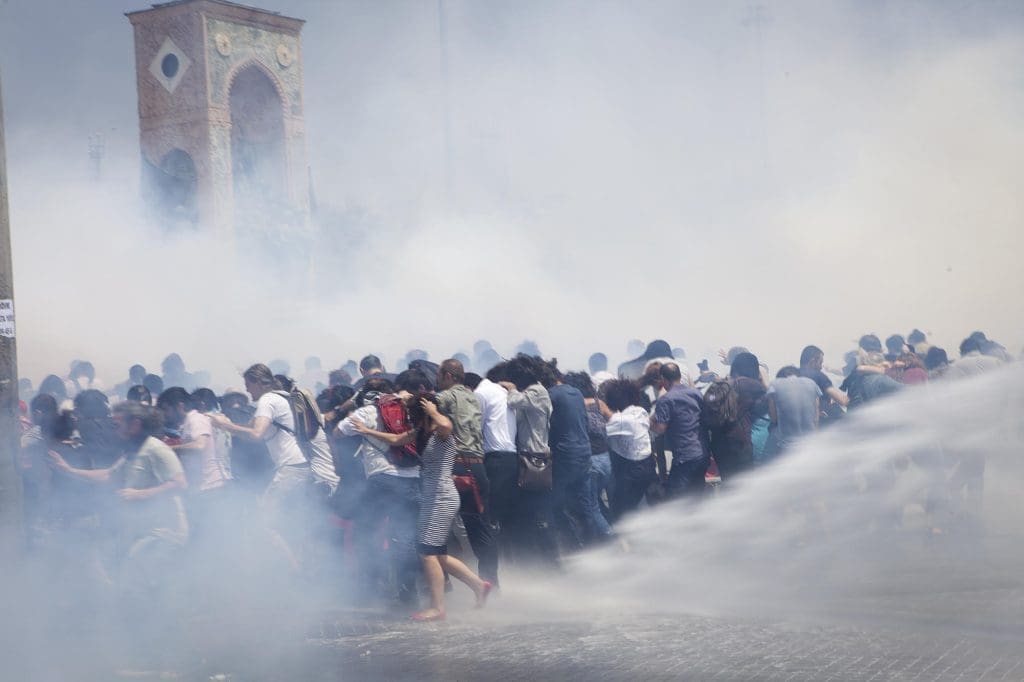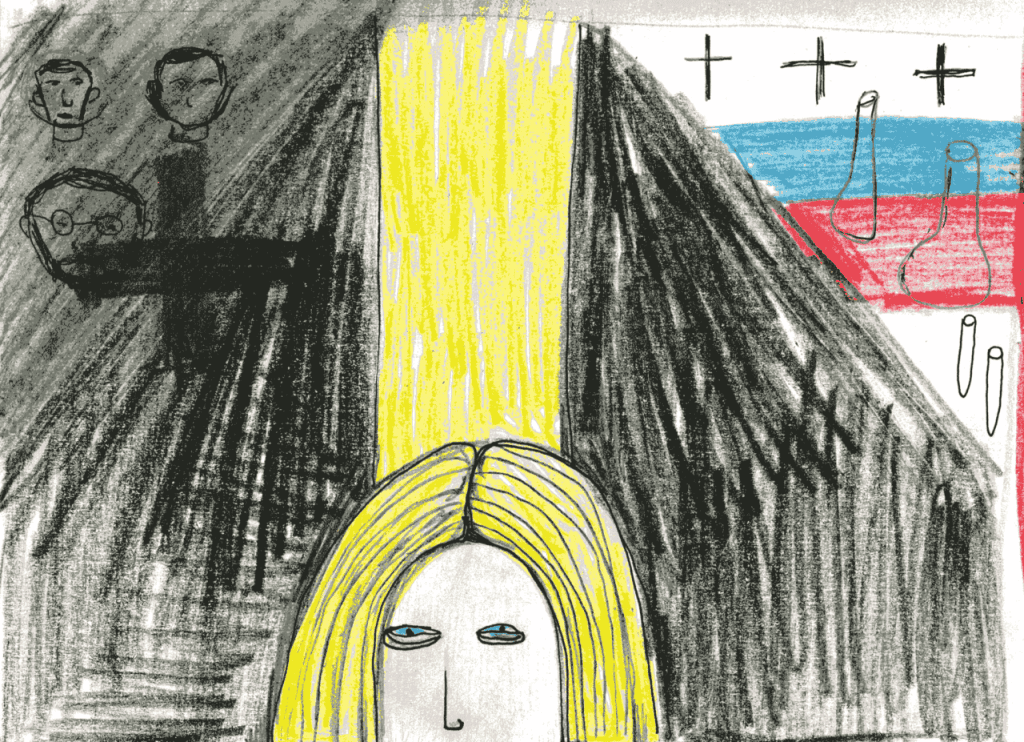by Yassamine Mather for the Hands Off the People of Iran blog
2 January 2018 (original post)
Protests by Impoverished, Hungry Iranians
There has been a considerable amount of fake news about the demonstrations that started in Mashhad and other towns in Khorasan province on 28 December 2017 and that continue five days later in Tehran and many other towns and cities across the country. The protesters are angry and fearless. However, the slogans and the nature of the protests are diverse, and at this stage there is no sign of a coordinated direction or leadership.
On the whole, the protesters’ grievances have been reasonably clear: it started with opposition to price hikes, unemployment, and poverty—and in a dictatorship this inevitably evolved towards more political slogans against corruption and against the dictator. Basic food prices have skyrocketed in the last few weeks. The price of eggs has gone up by 40% in a matter of days. In some of Iran’s major cities, rent has gone up by 83% in the last three years. Mass unemployment is worse in the provinces where the protests started; the rate of inflation has come down from the 35% of the Ahmadinejad era but is still out of control.
The relative diversity of internal media (albeit limited to factions of the regime) means Iranians are aware—indeed well informed—about the multi-billion-dollar corruption scandals in all factions of the regime: Rouhani’s government as well as senior ayatollahs associated with more conservative factions, not to mention the scandals associated with former populist president Ahmadinejad, who claimed to be the defender of the dispossessed. He and his close allies are currently facing judicial criminal cases in Iranian tribunals, all relating to serious corruption charges. As factions of the regime expose their opponents’ corruption, Iranians have become aware of the scale of embezzlement drowning all of them.
Contrary to initial claims by Rouhani’s allies, the protests are definitely not part of a plot by ‘conservative factions’ to discredit his government. The slogans were clear in Mashhad and other Khorasan province cities, and the main target of most demonstrators was Ayatollah Khamenei.
In the last few days the most common political slogans were: Marg bar dictator (“Death to the dictator”), Khamenei haya kon mamlekato raha kon (“Khamenei have shame, leave the country alone”), and the more polite slogan “Seyed Ali [Khamenei], excuse us. Now we have to stand up.”
In Rasht there were anti-Rouhani slogans, but they soon became anti-dictatorship, a clear reference to the unelected supreme leader.
In Tehran the student protesters shouted more radical slogans: Na eslahtalab na ossoul gara (“No to reformists, no to the conservative principlists!”) and “Student-worker unity.” It can no longer be a choice between bad and worse.
Also, for all the claims of exiled groups and the the extended publicity they receive from sections of the media, including BBC Persian radio (though interestingly not TV), these protests have nothing to do with either monarchists or mojahedin. Following the slogans of protesters on social media, it is clear that only in very few instances (mainly in the religious city of Qom and on one occasion in the northern city of Rasht), crowds shouted in favor of the Shah—later prompting larger crowds to shout “We want an Iranian Republic!” (as opposed to an Islamic Republic).
The fact that the protest in Mashhad coincided with a call by Reza Pahlavi should not be taken seriously. He issues such calls daily, and it is very rare that anyone pays them any mind. It was above all else hunger and poverty that prompted the protests, with demonstrators saying, “Dying is better than living like this.”
One of the more popular slogans in response to monarchist attempts to claim support among protesters has been Na mir na rahbar, na shah na rahbar (“No king, no Shah, no supreme leader!”).
For those Iranians who think that under the Shah there was no poverty or hunger, it might be worth recalling a quote from Empress Farah Diba, who—in true Marie Antoinette style—told the nation they would benefit from vegetarianism when advisers told the court that ordinary people complained they couldn’t afford to buy meat. As for corruption, it is true to say that the Shah’s mistrust of everyone, including former ministers, meant that only a limited circle of individuals close to the Shahs and the court benefited from rampant corruption. The multiplicity of factions in the current Islamic regime just means a far larger group of individuals and their respective families are beneficiaries of global capital’s riches for the wealthy in the Third World.
And this is all without having mentioned the fact that the so-called ‘targeted sanctions’ imposed by the West in the 2007-2015 period allowed sections of the Islamic Republic with access to both foreign currency and internal black markets to amass astronomical fortunes. So it is true to say Islamic Iran is even more corrupt than the Shah’s Iran, but we do live in different times.
As for democracy under the Shah, he merged what he called the “Yes, Sir” party and the “Of Course, Sir” party [the People’s Party and the New Iran Party] into one party: Hezb Rastakhiz [the Resurgence Party]. Iran had only two daily papers, Kayhan and Etelaat, both pro-Shah, and there were no factions in his circles so there were no exposés among opponents.
When it came to repression, let us remember that his security forces, SAVAK, shot Catherine Adl, the paralyzed daughter of his own physician, while she was sitting in a wheelchair, for opposing inequality and injustice in Iran. You can guess what he did to opponents he didn’t know.
Some Iranians, no doubt prompted by constant Saudi-, Israeli-, and Western-sponsored media outlets, blame Iran’s interventions in Syria and Yemen for the worsening economic situation at home. This has led to nationalist slogans: “No to Gaza, no to Yemen.” Here the regime is not blameless; promoting General [Qasem] Soleimany [commander of the IRGC’s Quds Force] as an “Iranian warrior and conqueror” has its consequences. However, the response to nationalist slogans came quickly, as students and youth in Tehran have come up with their own version of this slogan: Ham Iran, ham Ghazeh zahmtkesh taht setame (“Both in Gaza and in Iran, the poor are under oppression!”).
The real reasons behind Iran’s economic situation are more complicated than military expenditure in the Middle East. The promised post-nuclear-deal economic boom hasn’t materialized, and now doubts about the future of the deal with Trump’s opposition to it have created despair especially among young Iranians.
In response to the riots, Rouhani countered that poverty, unemployment, and inflation are not unique to Iran—and that is true…however, what he failed to mention is that for all the anti-Western rhetoric, the Islamic Republic is an ardent follower of the neoliberal economic agenda. His government of technocrats is rightly blamed for following the restructuring programs of the IMF and the World Bank, one of the reasons behind the growing gap between the rich and the poor. His is a government that constantly strives to keep up with global capital’s demands for restructuring, abolition of subsidies, and privatization.
If 2017 might be remembered worldwide as the year when neoliberalism faced serious challenges in advanced capitalist countries, in Iran it was doing well (at least until the protests of late December). Now entering the second term of Ayatollah Rouhani’s presidency, his government of technocrats has been praised for its economic performance by none other than the World Bank and the IMF.
Food subsidies have been slashed. The official twelve percent rate of unemployment is a joke; the real figure is much higher. And then we must take into account low-paid and precarious employment. No one has job security unless they are associated with a stable faction of the regime or the security forces.
It is certainly true that corruption is not unique to Iran or even just to developing countries. However, in most other countries people fed up with corrupt leaders have the chance to elect political rivals, and although it takes a relatively short time before the new rulers overtake their predecessors’ corruption, the whole process at least gives the illusion that the people have some say, and at least at the end of a four- or five-year period the population has the possibility of testing in turn a new set of rulers. After 39 years in power, all the various factions of the Iranian government are deeply entrenched in corruption even when they are not in the government. The reformist faction did not lose its fortunes or privileges during the Ahmadinejad years; the “principlists” might not be in ministries since Rouhani’s first term as president in 2013, but as part of the ‘system’ (nezam) they benefit from privileges necessary for amassing fortunes associated with state corruption. So the slogans in Iran rejecting ‘reform’ are correct: we no longer want to choose between bad and worse.
There can be no doubt that the government was taken by surprise, and the ministry of information’s call for asking ‘permission to organize protests’ is being ignored. No one believes the state will allow any protests.
So the demands are very widespread; there is no single organizing force, and no proposed alternative.
There are calls for strikes by teachers, and by steel workers in Isfahan, however the reality is that the ‘capitalist mullahs’ (as people are calling them in the streets of Tehran) have managed to decimate the organized working class. Steel workers and oil workers are no longer employed by single state-owned industries. Large industrial complexes are subcontracting every aspect of the work to smaller contractors. As a result, organizing industry-wide strikes—never mind meaningful national strikes (an important element in the overthrow of the Shah’s regime)—is no longer possible.
So what can we do to support the protest in Iran?
1) Show solidarity with those arrested; support relatives of those killed by the security forces; draw attention to the government’s repressive measures
2) Remind anyone with illusions about the previous regime that it was no better than this one, and give clear examples rather than just repeating slogans or insulting those who don’t know
3) Expose the true nature of the Islamic Republic of Iran while reminding people like Trump that “it’s the economy, stupid.” The neoliberal economy is the source of the current rebellion in Iran.





